Back to JP´s Corner home page
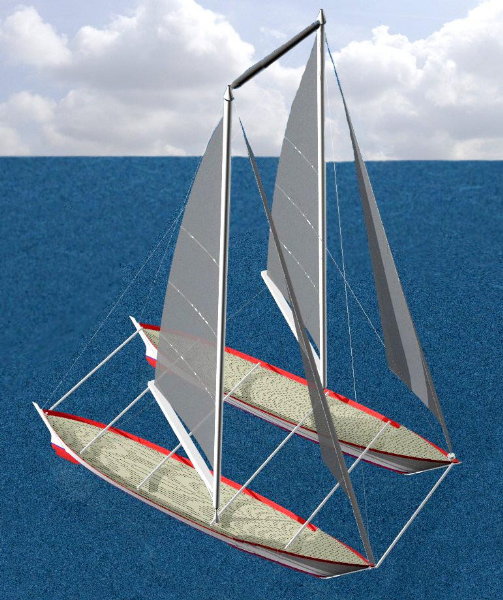
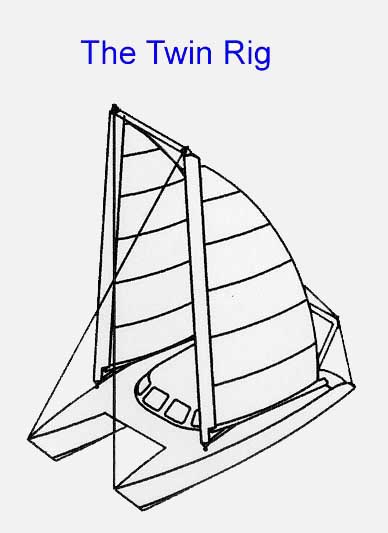
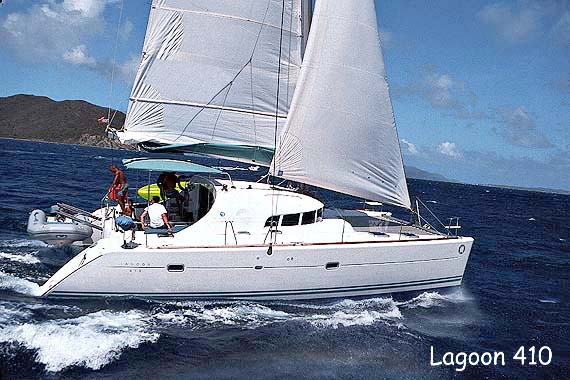
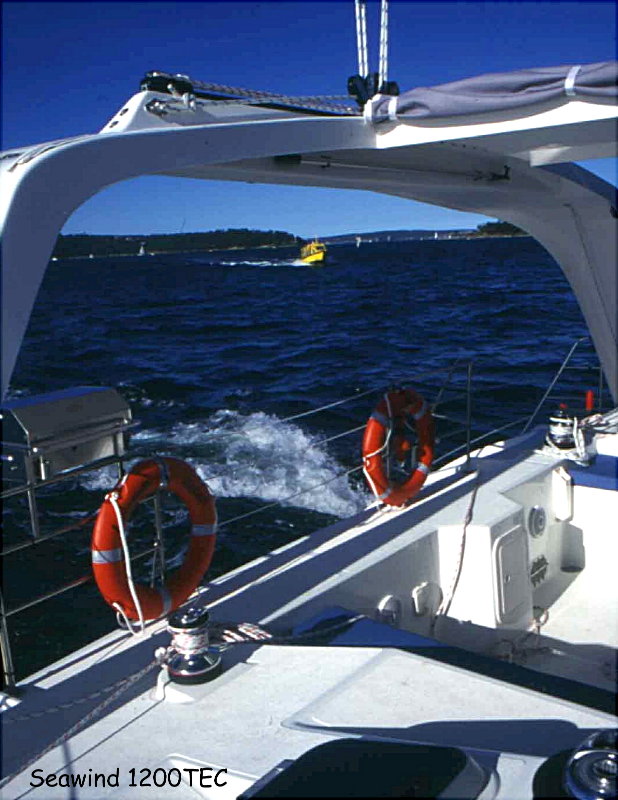
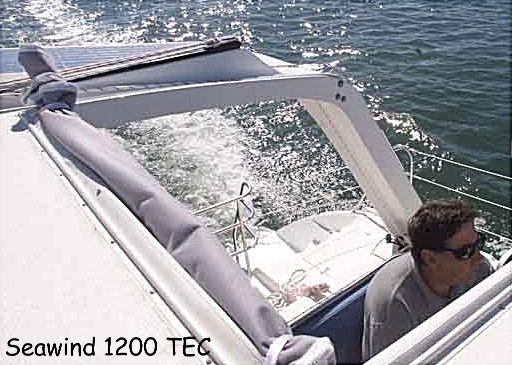
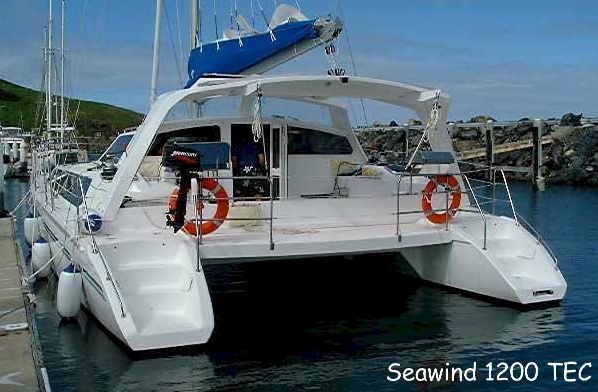
|
Description |
Pros |
Cons |
|
Option 1a: Twinrig (2x
46sqm = 92sqm) with furling
booms |
- Performance - Ease of
handling - Possibility to
lower masts - Good windward
performance - Down wind
square sail (bow lift) |
- Cost (2 masts,
booms) - Masts depends
on each other and the connecting strut - Gibing (weight
of furling booms) - Main sheets
control |
|
Option 1b: Twinrig with
jibs (est. 122sqm) with furling booms |
- Performance
(top of the list) - Ease of
handling - Possibility to
lower masts - Best windward
performance |
- Cost (2 masts,
booms, jib furling gear) - Masts depends
on each other and the connecting strut - Gibing (weight
of furling booms) - Main sheets
control |
|
Option 2a: 2 Freewing masts
= 92sqm with furling
booms |
- Masts are
independent - Ease of
handling |
- Cost (see
above 1a) - Masts are
heavier (no stays) - Need space
below for bury - Gibing (weight
of furling booms) - Main sheets
control |
|
Option 2b: 2 Freewing masts
+ jibs on balestrons = est. 120sqm |
- Masts are
independent - Ease of
handling - Gibing (jibs
counter act) |
- Cost (see
above 2a, probably the most expensive of all options) - Masts are
heavier - Need space
below (bury) - Main sheets
control |
|
Option 3a: 1 Freewing mast
with jib = 46sqm + 24sqm
(est.) = 72sqm one furling boom
(MK2) |
- Cost (one
mast, one boom) - Known option - Ease of
handling (best of all, including gibing)
|
- Performance - bury (central
position) - Heavier than
Twinrig |
|
Option 3b: Same as 3a but
with mast in one hull (proa style, but hulls same lengths) |
- Cost (see
above) - Ease of
handling (as 3a) - Mains go out
further than 90 deg. |
- unproved
design (asymmetry) - Performance
(to improve bigger boom and mast could be considered) - Main sheet
control |
|
Option 4a: Conventional
stayed aluminium mast incl. jib = est.
90sqm with furling
boom (Profurl MK2) |
- Cost (one
mast, one boom) - preferred
option by Profurl |
- Stays - Gibing - Large loads on rig, hulls and bridge deck |
|
Option 4b: Conventional
stayed aluminium mast = est. 110sqm With furling
boom (Profurl MK3)
|
- Performance
(ratio goes up to around 57, like the Crowther 42) - Preferred option by Profurl (aluminium mast) |
- Stays - Gibing (bigger
boom) - Handling
(biggest main sail) - Large loads on
rig, hulls and bridge deck
|
|
Option 5: Unstayed masts
with wishbone mains (no jibs) see Wyliecat
web site.
|
- Less weight (mast is a tube, wishbone is lighter than furling booms, no jib furling gear) - Lower cost if using standard masts (?) - Performance - Mains go out further than 90 deg. |
- Reefing in place of furling mains - Need sail covers and lazy jacks
|
| Brand | Model | Length ft | Length M | Displ. Kgs | Total sail M2 | Ratio | Bruce # | |
| 1 | Crowther Multihulls | Crowther 42 | 42 | 12,80 | 6000 | 109,0 | 0,575 | 1,448 |
| 2 | St. Francis | St Francis 44 | 44 | 13,45 | 7000 | 115,0 | 0,561 | 1,413 |
| 3 | Multicap Caraibes | Punch 11.50 | 40 | 12,00 | 5000 | 90,0 | 0,555 | 1,398 |
| 4 | Soubise Plaisance | Freydis 42 | 42 | 12,80 | 7000 | 109,0 | 0,546 | 1,375 |
| 5 | Atelier Outremer | Outremer 40 std | 40 | 12,10 | 5500 | 92,0 | 0,543 | 1,369 |
| 6 | Catana France | Catana 431 | 43 | 13,10 | 8000 | 118,0 | 0,543 | 1,369 |
| 7 | Crowther Multihulls | 40 MK II | 40 | 12,20 | 5450 | 90,0 | 0,539 | 1,358 |
| 8 | Crowther Multihulls | Crowther SP40 | 40 | 12,19 | 6400 | 100,0 | 0,539 | 1,357 |
| 9 | Nauticomposites | Bohème 43 | 43 | 13,45 | 5900 | 94,0 | 0,537 | 1,352 |
| 10 | Farier Marine | F41 | 41 | 12,10 | 5300 | 87,2 | 0,536 | 1,350 |
| 11 | Schionning | Cosmos 1250S | 41 | 12,50 | 7000 | 104,0 | 0,533 | 1,343 |
| 12 | Bader Catamarane | Sunact 40 | 40 | 12,09 | 5000 | 82,0 | 0,530 | 1,334 |
| 13 | Kelsall | Coral Sea 40 | 40 | 12,00 | 6000 | 92,0 | 0,528 | 1,330 |
| 14 | Schionning | Wilderness 1230 | 42 | 12,30 | 6350 | 95,0 | 0,526 | 1,326 |
| 15 | Atelier Outremer | Outremer 38 | 38 | 11,60 | 4200 | 72,0 | 0,526 | 1,325 |
| 16 | Brazapi | Brazapi 40 | 40 | 11,99 | 6500 | 95,0 | 0,522 | 1,316 |
| 17 | PDQ Yachts | PDQ 42 Antares | 42 | 12,20 | 7250 | 102,0 | 0,522 | 1,315 |
| 18 | Alliaura Marine | Privilège 435 | 43,5 | 13,45 | 8300 | 111,0 | 0,520 | 1,311 |
| 19 | Moorings Yachting | Moorings 4200 | 42 | 12,62 | 8650 | 114,0 | 0,520 | 1,311 |
| 20 | Catana France | Catana 401 | 40 | 12,50 | 6500 | 94,0 | 0,520 | 1,309 |
| 21 | Fountaine Pajot | Belize 43 | 43 | 13,00 | 8600 | 111,0 | 0,514 | 1,296 |
| 22 | Edel Catamaran | Helios 38 | 38 | 11,68 | 5000 | 76,7 | 0,512 | 1,291 |
| 23 | Multicap Caraibes | Punch 12.50 | 42 | 12,70 | 6500 | 90,0 | 0,508 | 1,281 |
| 24 | Voyage Catamaran | Voyage380 | 38 | 11,50 | 6000 | 85,0 | 0,507 | 1,279 |
| 25 | Fountaine Pajot | Athena 38 | 38 | 11,60 | 6000 | 85,0 | 0,507 | 1,279 |
| 26 | Edel Catamaran | Helios 42 | 42 | 12,68 | 6400 | 86,0 | 0,499 | 1,259 |
| 27 | Seawind | 1200 TEC | 39'4 | 12,10 | 8100 | 100,0 | 0,498 | 1,255 |
| 28 | Fountaine Pajot | Lavezzi 40 | 40 | 11,90 | 7000 | 90,0 | 0,496 | 1,250 |
| 29 | Manta USA | Manta 42 | 41,8 | 12,75 | 6125 | 82,0 | 0,495 | 1,247 |
| 30 | Prometa | Cat. 41 | 41 | 12,60 | 9000 | 103,0 | 0,488 | 1,230 |
| 31 | Dufour | Nautitech 395 | 40 | 11,98 | 6600 | 82,5 | 0,484 | 1,220 |
| 32 | Lagoon/CNB | Lagoon 410 | 41 | 12,37 | 7400 | 89,0 | 0,484 | 1,220 |
| 33 | Alliaura Marine | Privilège 37 | 37 | 11,17 | 6500 | 80,0 | 0,479 | 1,208 |
| 34 | Fortuna Catamarans | Coralinne 40 | 40 | 12,20 | 7200 | 85,2 | 0,478 | 1,205 |
| 35 | Manta Enterprises | Manta 40 | 40 | 12,00 | 5900 | 74,0 | 0,476 | 1,200 |
| 36 | Pedigree catamaran | Farrier 41 | 42 | 12,00 | 7700 | 87,0 | 0,472 | 1,190 |
| 37 | Robertson & Caine | Moorings 3800 | 38 | 11,00 | 7300 | 83,0 | 0,470 | 1,183 |
| 38 | Lagoon/CNB | Lagoon 380 | 38 | 11,55 | 7120 | 79,0 | 0,462 | 1,164 |
| 39 | Prometa | Cat 38 | 38 | 11,45 | 7000 | 75,0 | 0,453 | 1,141 |
| 40 | Prout | Prout 38 | 38 | 11,58 | 6500 | 70,5 | 0,450 | 1,134 |
| 41 | Prout | Prout 39 | 39 | 11,90 | 8500 | 75,0 | 0,424 | 1,069 |
| Description | Item Code | Quantity | Dimensions
(inches) |
Weight (lbs) | Tot. Weight |
| ST37 motor 4.5kw |
ST37 | 2 | 13Dia x 13L | 78 | 156 |
| Battery Charger | KS 091 127 | 1 | 16 x 21.5 x 3 | 42,5 | 42,5 |
| Main Distribution Box | MDB-TW | 1 | 8x10x10 | ? | |
| Safety Power Mgt & Distr. Panel | SPDM | 2 | 15x12x6 | 10 | 20 |
| Battery Cable Assembly | CA-01 | 1 | NA | 50 | 50 |
| Motor mounts | MTS-RBR | 2 | NA | 4,5 | 9 |
| Digital read-out | E-Meter | 1 | 2" Dia | 0,5 | |
| Sub-Total | 278 | ||||
| Batteries Group 4D | LL4DL | 12 | 20.75”Lx8.71”Wx10.44H | 135 | 1620 |
| Mini Electronic Throttle control | MN-CTRL N2 | 1 | NA | 0,5 | |
| Digital Amp meter | AMMD | 2 | NA | ||
| 144V DC Generator
9kw |
Gen 9 | 1 | 44.8"Lx23.6"w 25"h | 550 | 550 |
| Genset starting battery | LL31T | 1 | 12,9"Lx6,75"Wx9,27"H | 69 | 69 |
| Inverter 144DC to 120 AC (3000 Watts) | INV3 | 1 | 13x25,5x9 | 150 | 150 |
| DC/DC Cross charger/Converter | DDH300V15 | 1 | 7 x 9 x 3 | 4 | 4 |
| Sub-Total | 2393,5 | ||||
| Total
weight in pounds |
2671,5 |
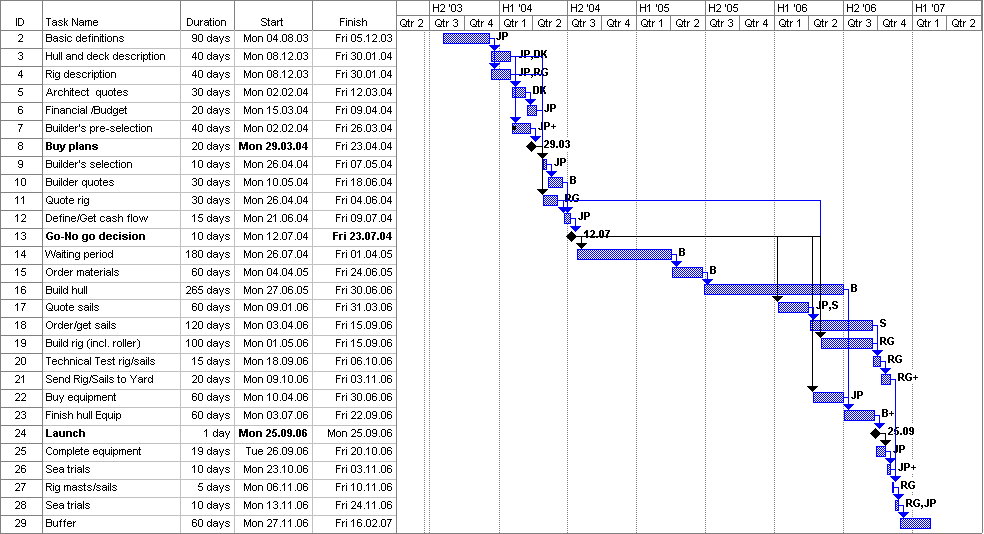
Updated but never finished - August 31,
2003 -
[email protected]
Back
to JP´s Corner home page